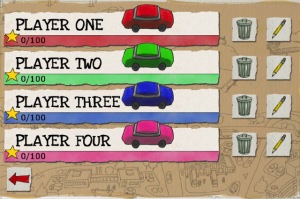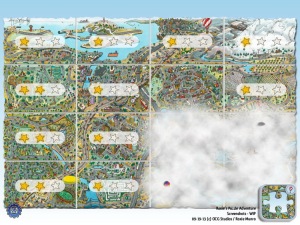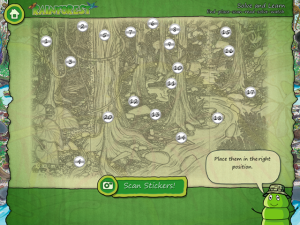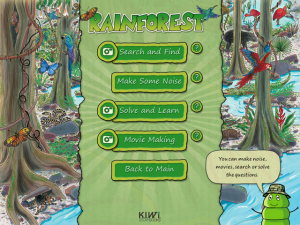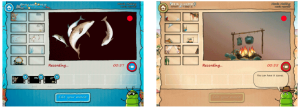(This post was written for The Book App Alliance, an organization of leading authors in the publishing industry who create interactive books for kids. See: http://www.bookappalliance.com/
To engage children and keep them interested, and to impart information in a fun way, many app creators use simple forms of “gamification”: lift-the-flap activities, mazes, guessing games, inside-outside concepts, search-n-find, ABCs and numbers, puzzles, matching games, Q&A, hidden objects, word/noun object recognition, and so forth. The games have to be logically associated and integrated with the subject – not just put in gratuitously.
I don’t do fantasy or digital video-type games. I make mainly nonfiction apps. However, many subjects lend themselves to these sorts of game-like interactive formats. It’s great for Common Core. For learning about concepts, people, animals, a historical period, science, a workplace, you can cast the content in an interactive way – children can look under flaps to discover things, answer Q&As (and earn points), play matching games, find and count items, look for hidden ABCs, solve a maze…often in collaboration with others.
Some of my apps with games, all built by OCG Studios:
“Roxie’s a-MAZE-ing Vacation Adventure” (games: solving interconnected mazes, out to the goal and back to the starting place, through 16 screens; finding various items like a recurring penguin, other animals, designated vehicles, numbers, alphabet letters, more; score is kept; up to five players):
“Roxie’s Doors” (games: seek-n-find objects behind flaps, doors, in drawers, under/inside things, etc; naming/vocabulary [word highlighting]):
“Roxie’s Puzzle Adventure” (game: 16 interconnected jigsaw puzzles/screens – choose between 6 and 260 pieces per puzzle/screen; choose rotation, hints, music; up to five players):
Coming out in September 2014: a series of 11 AR (augmented reality) apps designed to work with KIWiStoryBooks (giant interactive walk-in picture books; themes: Rainforest, Dinosaurs, Space Station, Coral Reef, Farm, Maze, Castle, Fire Station, more):
“Seek-n-Find.” Matching game; with iPad camera, match images found in backdrop (here, Maze and Farm):
“Make Some Noise.” Click on images, hear the sounds, and record your own (here, Fire Station and Space Station):
“Explore & Learn.” Q&A with information and fun multiple choice answers with rewards, games, hidden details/scratch off (here, Rainforest, TV Station, Castle, and Dinosaurs). Activated by scanning markers/stickers placed on KIWiStoryBook:
“Movie-making.” Use iPad camera and supplied frames to make series of 1-minute videos. Combined/edited into 8-minute movie w/kids’ own voiceovers/narration (here, Coral Reef and Wild West/Native Americans):
“Puzzles.” Activated by scanning markers/stickers placed on KIWiStoryBook (here, Desert and Fire Station):
Engaging in games helps children with concentration, setting goals, problem-solving, working together and collaboration (many allow multiple players), perseverance, and celebrate achieving goals. Many games, and mazes in particular, also help children learn decision-making and critical thinking skills. They make them think ahead and plan steps in advance. Mazes teach alternative ways to solve problems and judge spatial relationships. For younger children, they help develop fine motor skills; for older children, maneuvering through mazes helps improve handwriting. Game formats are particularly suited to reluctant readers, special needs children, and boys (although girls are rapidly catching up).
So, using games in apps enhances learning, engagement, and collaboration. And, of course, they’re fun!!!
More info, see Gamification post below on interactivity in print books, and
Using games in the classroom: http://teacherswithapps.com/teachers-surveyed-on-using-games-in-the-classroom/

